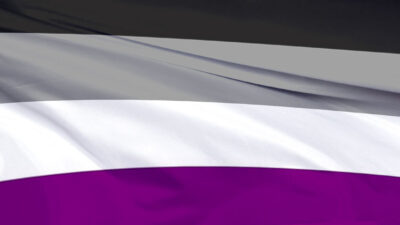
5 things you might have missed from the 2021 Census
For over two centuries, LGBTQ+ people have been excluded from the Census.
Now, after two decades of campaigning, the number of lesbian, gay, bi, trans and asexual people in England and Wales has been counted in the Census 2021 for the very first time.
The Census results don’t just give visibility to a section of the population who have long been hidden – although that alone would be reason enough to celebrate. This data will help us campaign more effectively to improve the lives of LGBTQ+ people in different areas of our lives – from improving access to healthcare to tackling homelessness. With our communities now more visible in data, we will be able to better understand the issues facing us regionally and nationally – and campaign for the right solutions, backed up with evidence.
The results of the Census are already helping LGBTQ+ people across England and Wales feel more seen and joyful, and as the year rolls on, even more data will be released that will enhance our understanding of the make-up of our communities and the challenges we face. Until then, here are five things that you might have missed from the initial Census data drop!
1. There are nearly as many bi and pan people as there are lesbian and gay people.
In England and Wales, there are 736,000 bi and pan people, and 748,000 gay and lesbian people. Yet, our 2020 LGBT in Britain survey found that only 20% of bisexual people are out to their families compared to 63% of gay and lesbian people. Along with the negative attitudes and behaviours experienced by many LGBTQ+ people, bi people also experience erasure. Stemming from assumptions around what LGBTQ+ people look like, and assumptions of their orientation based on the gender of a person’s current partner, this can create a secondary layer of discrimination. The results of this Census highlight the need to tackle bi erasure and provide specific support for the bi community.
Learn more on our bi hub.
2. 0.5% of the population have a gender identity that is different from the one they were assigned at birth.
This figure is in line with what we expected to see for the trans and non-binary population in England and Wales, based on comparable data from Canada. Within this, some may be surprised to learn that the number of trans women and trans men is almost exactly the same – each accounting for 0.1% of the population, with a slightly smaller proportion identifying as non-binary at 0.06%. A small but vulnerable minority group, trans people deserve our solidarity and support.
Hear from trans and non-binary people via our trans hub.
3. There are 28,000 people in England and Wales who identify as asexual.
Ace people have always been part of the LGBTQ+ community but are often erased and ignored. Now, the results of this Census highlight that there are a significant number of individuals in England and Wales who belong to this community, and who deserve recognition and support.
Find out more about how to be an ally to asexual people.
4. LGBTQ+ people live and participate in every part of the country, rural and urban.
The Census is proof that LGBTQ+ people are not just bound to big cities – we can see representation in every community across England and Wales. This highlights the need for LGBTQ-inclusive events and support in all areas, and the importance of uplifting the voices of LGBTQ+ individuals based outside of big cities.
5. Brighton and Hove is the most LGBTQ+ place!
Brighton and Hove has the smallest proportion of cisgender-heterosexual individuals in its population out of any local authority in England and Wales. Home to countless LGBTQ+ venues, charities, and support services – and the site of one of the UK’s largest Pride parades – the community in Brighton strive to create a welcoming and safe environment for LGBTQ+ individuals, and to raise awareness for our communities in the process.


